- Home
- Komodo Dive Sites
Komodo Dive Sites
You can jump in the water almost anywhere in and around the Komodo National Park and have good fish life and coral cover. This list of brief descriptions covers some of the more exceptional and popular dive sites in the Park.
Sabolon Island
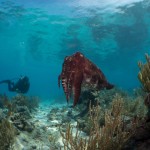
Sebayur Kecil
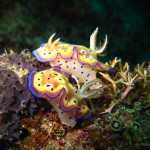
Mini Wall

Tatawa Besar
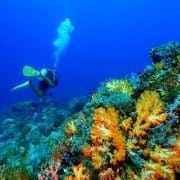
Normally it is an easy drift dive but can become quite fast on a strong falling tide, but don’t worry, relax and enjoy the ride, as we will end the dive in an area protected from the main current. Here we will normally have a 5-10 minute stay in the shallows looking for mandarin fish and other critters.
Tatawa Kecil

The shallow coral gardens are healthy and beautiful, a great place to spend your safety stop. This site has wild currents around new and full moon strong and may not even be suitable for experienced divers in these periods.
Batu Bolong

Batu Bolong is not always suitable for inexperienced divers as even the “protected” area experiences upwelling and downwelling if the current is very strong. Good buoyancy control is vital on this dive site and we always remind divers to stay close to the reef and behind the dive guide.
Manta Point
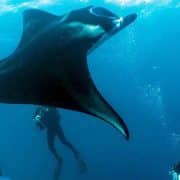
Mawan

Siaba Besar
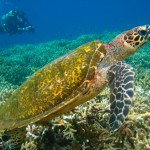
Siaba Kecil
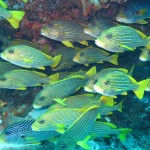
Pengah
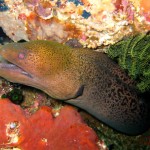
Wae Nilu

One Tree
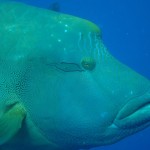
Batu Sabun
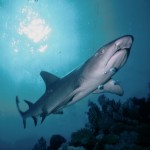
Batu Tiga
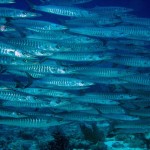
Castle Rock

Crystal Rock
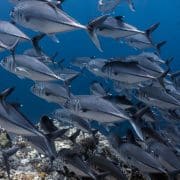
The Cauldron
Also known as ‘The Shotgun’. This is a unique drift dive, passing between two islands. In the center of the passage is the cauldron itself, a huge crater 22 meters in the middle with steep walls all around. Only accesible on a falling tide, we jump on the west of the passage into a vibrant and buzzing coral garden. At first there’s not much current but as you drift closer to the cauldron it will start to speed up until it reaches a climax at a point called the shotgun. Here is where we hold on and feel the power of nature! White tipped reef sharks, manta rays and big schools of jacks also like to play in the current so keep an eye out. When your guide gives the signal it’s time to let go and flow through the channel, ending in a protected coral garden.
Light House

Golden Passage – South
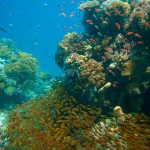
Pillar Steen
Pillar steen is a pinnacle rock on the shore of a small island east of Padar Besar. Its best to enter just off the point below the rock where there is a nice wall then swim to the west where you will find an interesting dive through lots of caves and swim-thrus at different depths. It is particularly good at around 30-40 meters. This dive is still quite good when other places have too much current. It can be affected by surge when a swell is running from the southwest. Large schools of fusiliers can be found here along a slope which is covered by an interesting variety of soft and leather corals. The landscape is really interesting and it’s not unusual to encounter sharks and the odd turtle.
Three Sisters
Three Sisters is another site around Padar. There are 3 large, submerged rocks (the ‘sisters’) within easy swimming distance of each other, about 10 meters apart. They rise up from the sandy bottom at 20 meters to around 3 to 5 meters from the surface. It is a very pristine site covered in coral growth and rich in fish life. They can be hard to find as its not marked on any charts and the rocks lay just below the surface. The rocks run in a line towards the east about 100 meters from a small reef that juts out on the eastern side of the island. It is often current affected but usually always diveable if you don’t mind having to swim a little. If you are adventurous there is actually a fourth sister located further to the west that starts in about 20 meters of water and drops down to 40 with some impressive fans and good abundance of life.
Padar Wreck
A wooden 12m long boat that sank in 2016 close to the small island Batubilah. Lying on a slope at 18-14m depth, it has been taken over by life; thousands of shrimp reside in crevices, barracuda are often seen, and batfish like to hang around the intact mast. This is also a great night dive, look out for zebra crabs inside fire urchins, dwarf cuttle fish and flying gurnards.
Secret Garden
Shhh no spoilers about the site because it is secret! Typically, the currents aren’t too strong here so suitable and interesting for both beginners and experienced divers.
Payung
The southern and western side side of Payung island (east of padar) offers a very interesting underwater landscape, with huge rocks that almost give the impression of a wreck dive. At the southern tip, at 5 m depth, you will find a rock in the shape of a cannon. There are lots of canyons and crevices to explore, and the fish and invertebrate life is diverse and abundant. There are big schools of surgeons and smaller yellow snappers (Lutjanus kasmira) and L. quinquelineatus). Typical for dive sites in the southern part of the park visibility is not very good (5-10 meters), the water is cooler, and the rocks are covered with soft coral, gorgonians, and feather stars. This site should be dived at slack-tide, preferably a slack of low tide. Two dives possible, one descending at the north-western tip (near the rocks that almost break the surface) then dive with the slope on your left (15-30 meters), turn around at the southernmost end of the island and work your way back at 10 m depth. The second dive starts at the southeastern side, around the southern tip of the island (20-35 meters depth), then back at 5-15 meters depth.
Nusa Kode
The southwestern tip of Kode island is characterized by large encrusted boulders with little corals and huge groupers. Very large fish are never really plentiful, but among the boulders you have a chance of seeing some of the largest fish on the reef such as the giant grouper, the potato cod and the malabar grouper. Schools of bohar snapper may keep you happy when you do not encounter the groupers
Cannibal Rock
Cannibal Rock is a small seamount in Loh Dasami bay, between Rinca and Nusa Kode island, is famous for its invertebrate life and it is a very easy dive with very little current. You can find many different species of invertebrates here as well as pigmy seahorses and frogfish. The fish life can also be quite good at times, with schools of bohar snappers, surgeon fish and quite a few species of scorpion fish. Soft coral life is excellent and very colourful. Sea apples and many other species of holothurians are abundant. Unusual nudibranchs, fire urchins hosting coleman shrimp and much more.
Yellow Wall
Yellow Wall is an excellent day or night dive just inside the southeastern corner of Loh Dasami bay, It is also one of the best areas in Loh Dasami for snorkelling. A very good place to see invertebrate diversity, especially during a night dive. The numbers of species and colours is simply mindboggling. Crevices in the wall hold sleeping slipper lobster and a variety of other crustaceans such as cleaner shrimp, reef crabs and decorator crabs. There are colourful poisonous sea urchins, bright red sea apples, beautiful soft corals, spanish dancers and a great variety of tunicates. Apart from sleeping coral trout and turtles you can see cat sharks, all kinds of cardinal fish, and parrot fish dreaming away in their snot-cocoons. 9 times out of 10 the current will be flowing to the north, so the best entry point is just around the western tip of the headland then follow the reef right into the bay.
Crinoid Corner
Crinoid corner is a good dive to do early in the morning as it catches the morning sun. Located in a small cove just outside the southern entrance to Loh Dasami on the island of Nusa Kode, almost directly opposite Invertebrate Wall. Entry point is just south of the cove then swim along the wall with the reef on your left. It’s usually best to start at about 25 m then work your way back and forth up the wall to the surface. A lot of small invertebrate life can be found here, and the wall is very colourful. It’s a nice easy dive with no current.
Boulders
If you travel from Crinoid Corner north along the coast of Nusa Kode into the bay of Loh Dasami you will come to a point where the coastline turns to the west and the bay opens up. Directly below this point there are several big boulders laying on the bottom. The deepest rock is in about 30 m of water and the shallowest is about 8 meters. The best point of entry is 100 meters south of the point. Here the reef slopes down to a dark sandy bottom of 30 to 35 meters. Here you will find a forest of soft coral growing on the sand. Then swim reef left up to 20 meters or so until you hit the boulders. Along the way check out all the fire urchins for the illusive Coleman Shrimp. A torch helps. This is the best location to find the shrimp in Loh Dasami as there are usually lots of fire urchins in the area. The Boulders themselves have good coral, invertebrate and fish life. Quite often Mobula rays (devil rays) can be seen in this area. Another good night dive option.
There is usually current at the site.
Tala
The southern point of Tala island is characterized by steep rocky walls and sometimes quite a strong surge. The dive is more than worth it though, with lots of small fish on top, interesting invertebrate life on the walls and lots of larger fish somewhat deeper. Enormous schools of surgeon fish sometimes make it difficult to see anything else since they cover the entire view. If you manage to look away from these creatures you’ll see plenty of large angry-looking Bohar snappers, Whitetip reef sharks. Other species of sharks and huge groupers can be spotted further down among the boulders.
German Flag
Located on the South Komodo shoreline, this site has cooler water from the upwellings of the Indian Ocean which provides a nutrient rich environment. The high densities of plankton attract many large filter feeding manta rays, which can normally be seen swimming right at the surface along the shores and rocks of South Komodo from Sep-Jan. The water near shore is quite shallow (5 – 20m) and there are many large rocks and boulders in between which we can find huge Malabar grouper, Potato grouper, Napoleon wrasse and schools of surgeon fish and Bohar snappers. There is usually current at the site.
Manta Alley
The tiny rocky islands in the South Komodo bay are great for snorkelling and diving, with sometimes lots of manta rays (Sep-Jan). Even if there are no mantas it is a very good dive, enormous giant trevally, sharks, beautiful coral and a very high diversity of other invertebrate life in relatively shallow water (5 – 20m). The water can be cool in this area but never too cold to dive. Only little damage has been done to the corals in this area and the damaged corals seem to be reviving naturally and rapidly. This site is also current affected. The best entry point is at the northeast side of the rock near a coral mount 3-5 meters below the surface.
Langkoi Rock / TNC Rock
This dive is a pinnacle located south-east of Langkoi island just below the surface. It is very exposed to current and can have a big surge. Usually, one can see the swell banking up on it but on a calm day it can be difficult to find. Its best to use a GPS position as it is not marked on most charts of the area. The rock drops down into very deep water very quickly. Coral growth is stunted however the dive can be a real adrenaline rush at the right time. Lots of sharks aggregate around this site during Jul-Sep – Grey Reef, Whitetips, Hammerheads and Bronze Whalers. It is also good for pelagic fish and has some resident Potato Groupers at the southern point at 30 meters deep. The best way to dive the Pinnacle is to jump in up current, go straight down, hang on and watch the show. This dive should not be attempted by inexperienced divers.
Pantai Merah (Pink Beach Komodo)
There is lots to be found at Pink Beach. Here a spanish dancer on a night dive.
Pink beach has a shallow fringing coral reef surrounding a large rock which breaks the surface at low tide. We usually start the dive at the rock as there as a great variety of tame fish life here and also a good selection of critters such as Leaf scorpionfish, Blueribbon Eels, crocodile fish and nudibranchs. Visibility varies and is best during an ebbing tide, the site is also a very good for night dives. Snorkeling is excellent from the beach which gets it’s light pink colour from microscopic animals (Foraminifera), which produce a red pigment on the coral reefs.
Loh Namu
The Peninsula of Loh Namu offers an interesting dive for those who are into large groupers and Napoleon wrasse. Dive around this point from south to north, at a depth of some 28 m and always just before high tide. We are almost guaranteed to see some big ones here! Most of the fish are found near the southern corner where some large boulders are spread out over the drop-off and a few caves offer additional hiding places. We have seen some of the largest coral trout here, hanging out side by side with Malabar groupers and huge male Napoleon wrasse which may be aggregating here to spawn. Look out for the giant Gigas clam in 8 meters depth.
Indi Hiang
Close to Loh Liang, this small island with steep walls is an ideal location for divers starting from Komodo Island. Many big fish and good corals can be seen when drift-diving along the vertical walls. The best time to dive here is at the end of the falling tide when the current has slowed down and we can easily drift along the eastern wall from north to south. Top attractions include Potato grouper, large Napoleon wrasse and schools of giant trevallies and snappers.
Loh Sera
Tanjung Loh Sera has superb diving all along the corner and off the corner towards some underwater pinnacles. Large pelagics like dogtooth tuna can be seen circling off the corner and around the nearby pinnacle. Only experienced divers can go off to the pinnacle, beginners should stay along the wall. Plenty of large fish and turtles along the wall. Be ready for some close encounters of the large kind! Tanjung Loh Sera has some monster giant trevallies, Potato grouper, Malabar grouper, schools of Bumphead parrotfish, Napoleon wrasse, Dogtooth tuna, manta rays and much more. The site is great for snorkeling along the northern shore of this cape.
High Adrenaline sites and quite surge affected at times; they feature sharp drop-offs, many sharks, and strong currents.
GPS Point
The seamount off the north-eastern tip once ranged among the best dive sites in this area; boasting up to 7 species of sharks in one dive. Schooling hammerheads have also been seen here during the month of September. Unfortunately this site was severely damaged by dynamite fishing in 1997 and 1998 and again more recently. It was also extensively fished by sharks finners. The hard corals suffered from the blast fishing and large patches of rubble are found in between stretched of good coral which still show what a great site this once has been. On the north western corner down at 30 meters you have a good chance of running into a pack of grey reef sharks. Good fish life is still abundant at the side which is exposed to the current and large spanish mackerel can usually be seen moving like missiles overhead. Dogtooth tunas can sometimes be seen along the deeper slopes.inar dapibus leo.
Gili Banta NE
An excellent hard coral garden lies below the entry point which is at the northern tip of the headland. We keep reef left as we continue into the bay. Look for frog fish on the sponges in the reef slope, various nudibranchs and other critters can be found in the dive site too.
Gili Banta NW
The North western tip of Gili Banta island is fantastic for both scuba diving and snorkeling. When deep diving (30-40 m) at the very tip we are getting into big-fish-country. Many coral trout, large groupers, schools of giant trevally, massive dogtooth tuna. The best place for entry is approximately 100 metres south of the point in the bay. Once you have rounded the point continue to the west way and you will find an excellent coral garden in the shallows to do the safety stop. Strong currents and even down-currents can be experienced on the point so its best to dive at slack-tide if possible. Snorkeling along the steep rocky wall we can see lots of small things, fish and some sharks and giant trevally.
